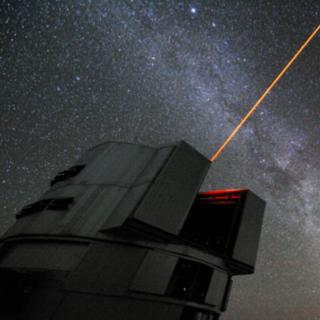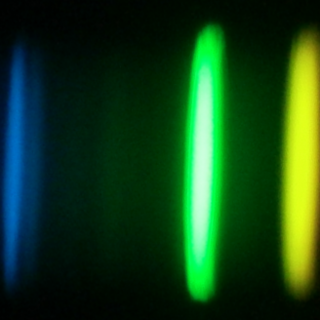Bibcode
Majewski, S. R.; Schiavon, Ricardo P.; Frinchaboy, Peter M.; Allende Prieto, C.; Barkhouser, Robert; Bizyaev, Dmitry; Blank, Basil; Brunner, Sophia; Burton, Adam; Carrera, R.; Chojnowski, S. Drew; Cunha, Kátia; Epstein, Courtney; Fitzgerald, Greg; García Pérez, A. E.; Hearty, Fred R.; Henderson, Chuck; Holtzman, Jon A.; Johnson, Jennifer A.; Lam, Charles R.; Lawler, James E.; Maseman, Paul; Mészáros, Sz.; Nelson, Matthew; Nguyen, Duy Coung; Nidever, David L.; Pinsonneault, Marc; Shetrone, Matthew; Smee, Stephen; Smith, Verne V.; Stolberg, Todd; Skrutskie, Michael F.; Walker, Eric; Wilson, John C.; Zasowski, Gail; Anders, Friedrich; Basu, Sarbani; Beland, Stephane; Blanton, Michael R.; Bovy, Jo; Brownstein, Joel R.; Carlberg, Joleen; Chaplin, William; Chiappini, Cristina; Eisenstein, Daniel J.; Elsworth, Yvonne; Feuillet, Diane; Fleming, Scott W.; Galbraith-Frew, Jessica; García, Rafael A.; García-Hernández, D. A.; Gillespie, Bruce A.; Girardi, Léo; Gunn, James E.; Hasselquist, Sten; Hayden, Michael R.; Hekker, Saskia; Ivans, Inese; Kinemuchi, Karen; Klaene, Mark; Mahadevan, Suvrath; Mathur, Savita; Mosser, Benoît; Muna, Demitri; Munn, Jeffrey A.; Nichol, Robert C.; O'Connell, Robert W.; Parejko, John K.; Robin, A. C.; Rocha-Pinto, Helio; Schultheis, Matthias; Serenelli, Aldo M.; Shane, Neville; Silva Aguirre, Victor; Sobeck, Jennifer S.; Thompson, Benjamin; Troup, Nicholas W.; Weinberg, David H.; Zamora, O.
Bibliographical reference
The Astronomical Journal, Volume 154, Issue 3, article id. 94, 46 pp. (2017).
Advertised on:
9
2017
Citations
1000
Refereed citations
916
Description
The Apache Point Observatory Galactic Evolution Experiment (APOGEE), one
of the programs in the Sloan Digital Sky Survey III (SDSS-III), has now
completed its systematic, homogeneous spectroscopic survey sampling all
major populations of the Milky Way. After a three-year observing
campaign on the Sloan 2.5 m Telescope, APOGEE has collected a half
million high-resolution (R ˜ 22,500), high signal-to-noise ratio
(>100), infrared (1.51-1.70 μm) spectra for 146,000 stars,
with time series information via repeat visits to most of these stars.
This paper describes the motivations for the survey and its overall
design—hardware, field placement, target selection,
operations—and gives an overview of these aspects as well as the
data reduction, analysis, and products. An index is also given to the
complement of technical papers that describe various critical survey
components in detail. Finally, we discuss the achieved survey
performance and illustrate the variety of potential uses of the data
products by way of a number of science demonstrations, which span from
time series analysis of stellar spectral variations and radial velocity
variations from stellar companions, to spatial maps of kinematics,
metallicity, and abundance patterns across the Galaxy and as a function
of age, to new views of the interstellar medium, the chemistry of star
clusters, and the discovery of rare stellar species. As part of SDSS-III
Data Release 12 and later releases, all of the APOGEE data products are
publicly available.
Related projects

Galaxy Evolution in the Local Group
Galaxy formation and evolution is a fundamental Astrophysical problem. Its study requires “travelling back in time”, for which there are two complementary approaches. One is to analyse galaxy properties as a function of red-shift. Our team focuses on the other approach, called “Galactic Archaeology”. It is based on the determination of galaxy
Emma
Fernández Alvar

Traces of Galaxy Formation: Stellar populations, Dynamics and Morphology
We are a large, diverse, and very active research group aiming to provide a comprehensive picture for the formation of galaxies in the Universe. Rooted in detailed stellar population analysis, we are constantly exploring and developing new tools and ideas to understand how galaxies came to be what we now observe.
Anna
Ferré Mateu

Nucleosynthesis and molecular processes in the late stages of Stellar Evolution
Low- to intermediate-mass (M < 8 solar masses, Ms) stars represent the majority of stars in the Cosmos. They finish their lives on the Asymptotic Giant Branch (AGB) - just before they form planetary nebulae (PNe) - where they experience complex nucleosynthetic and molecular processes. AGB stars are important contributors to the enrichment of the
Domingo Aníbal
García Hernández

Chemical Abundances in Stars
Stellar spectroscopy allows us to determine the properties and chemical compositions of stars. From this information for stars of different ages in the Milky Way, it is possible to reconstruct the chemical evolution of the Galaxy, as well as the origin of the elements heavier than boron, created mainly in stellar interiors. It is also possible to
Carlos
Allende Prieto